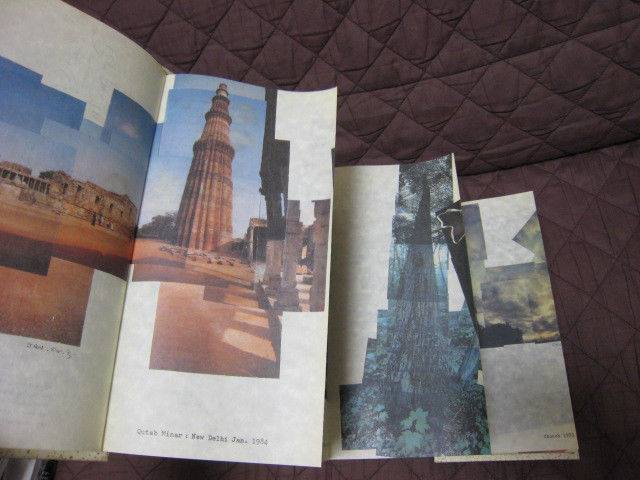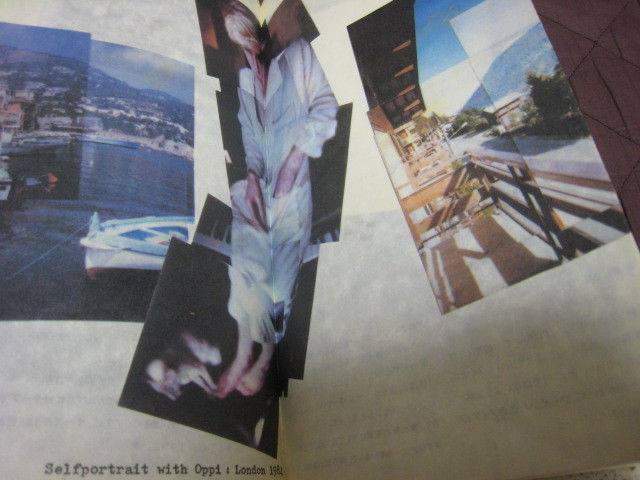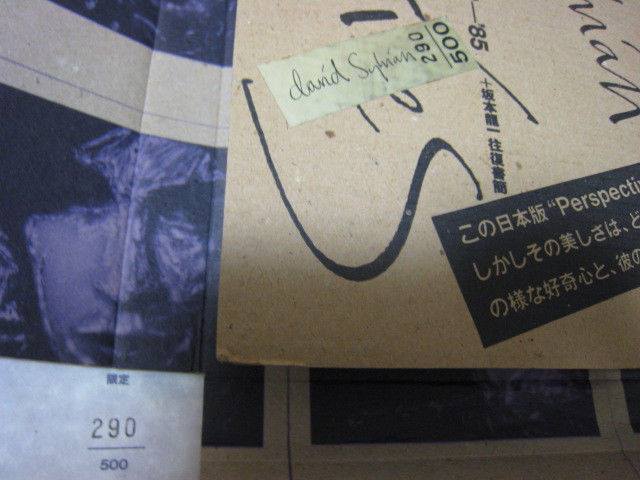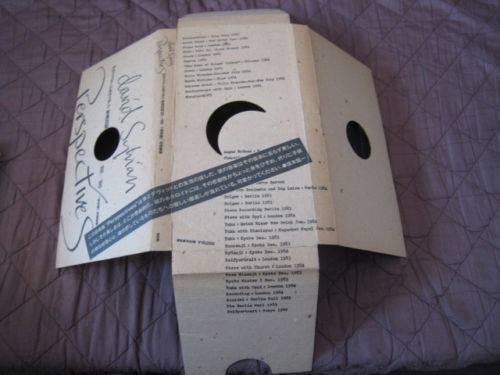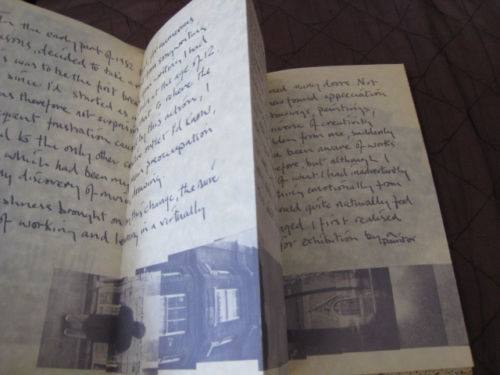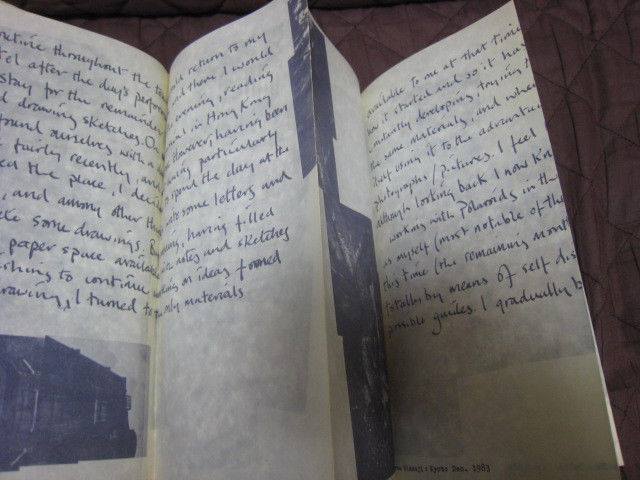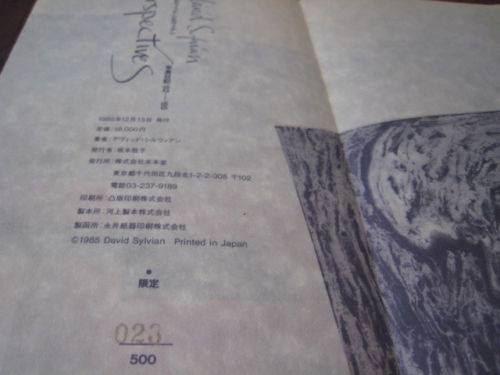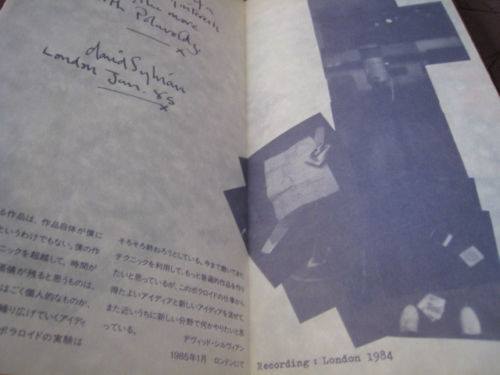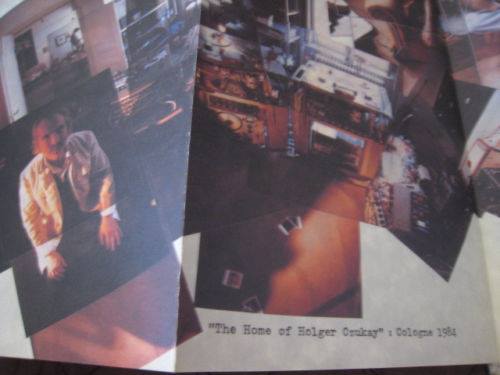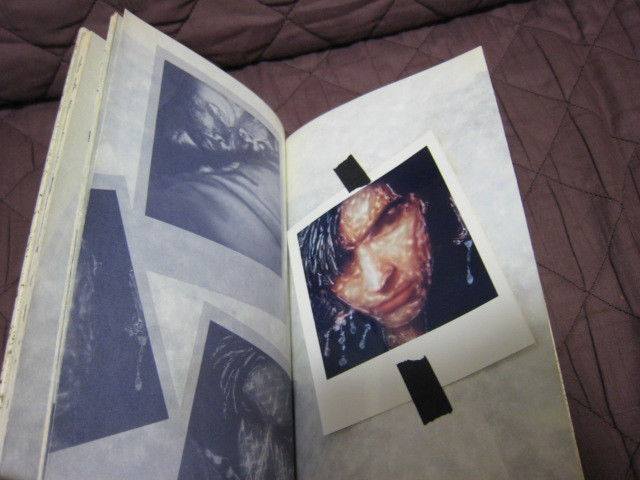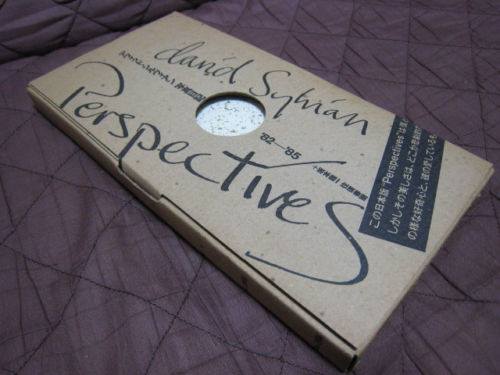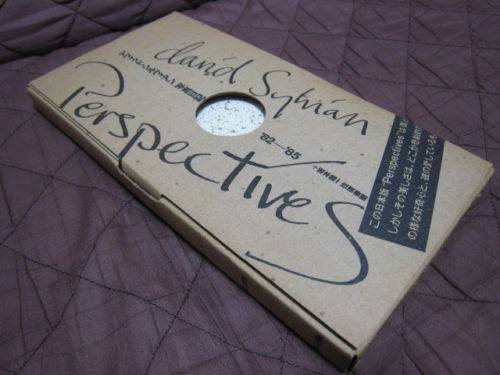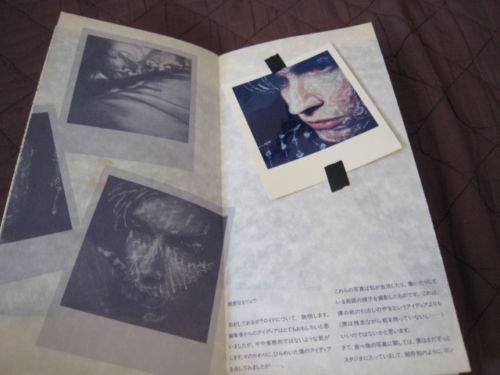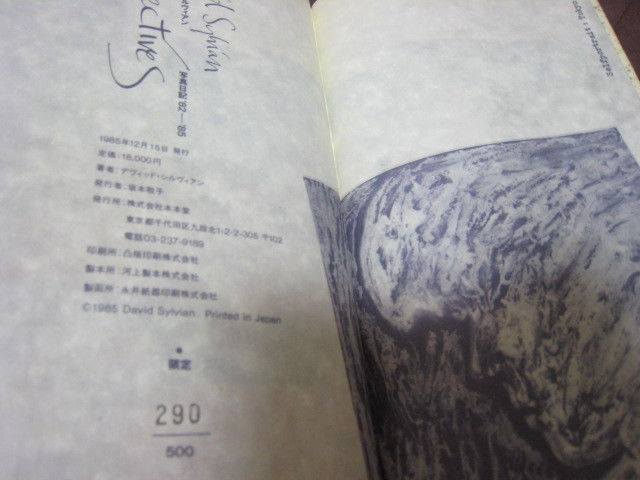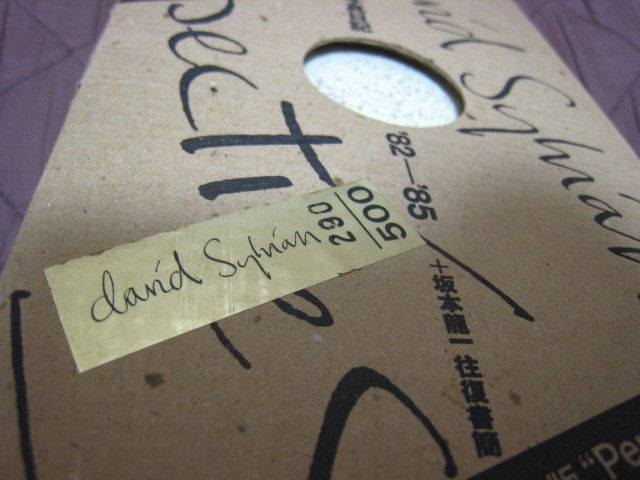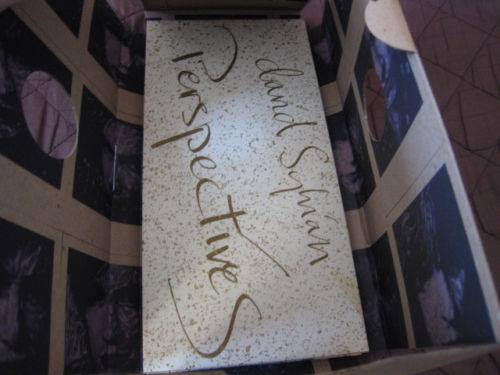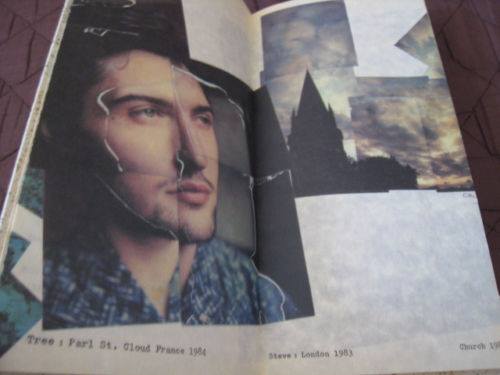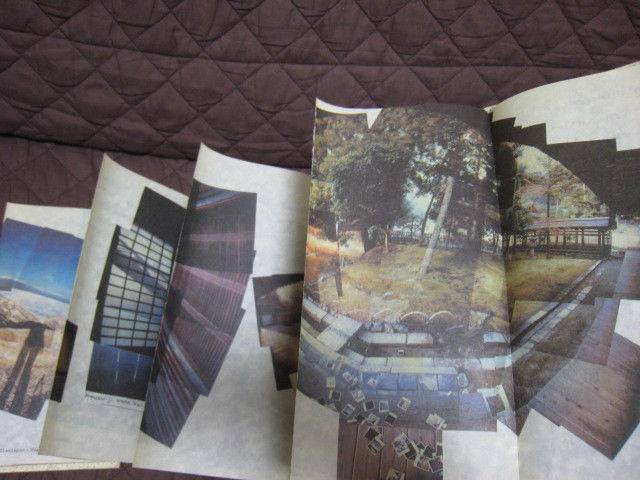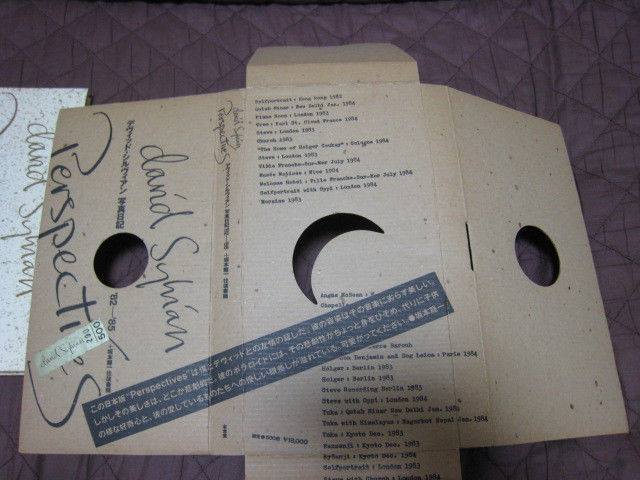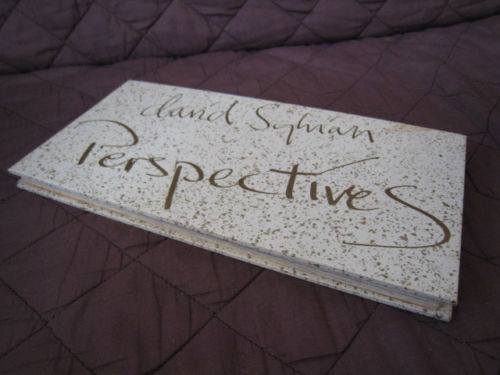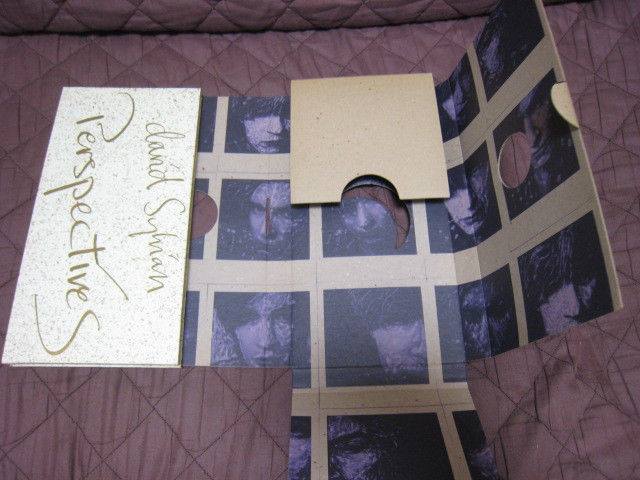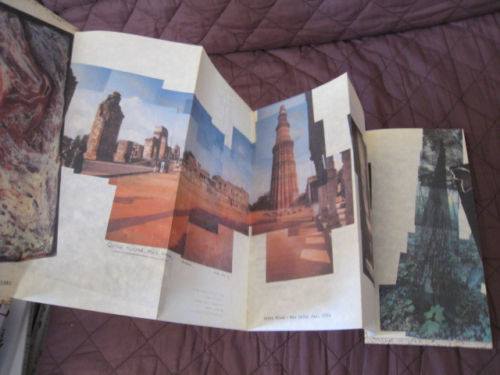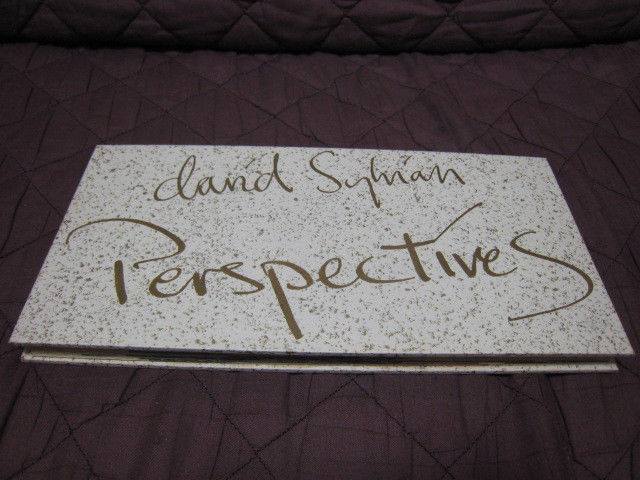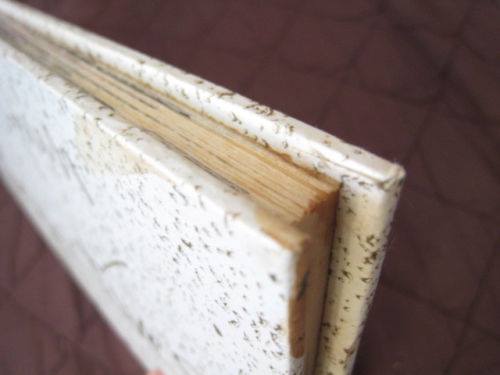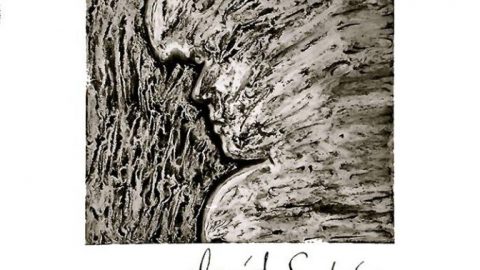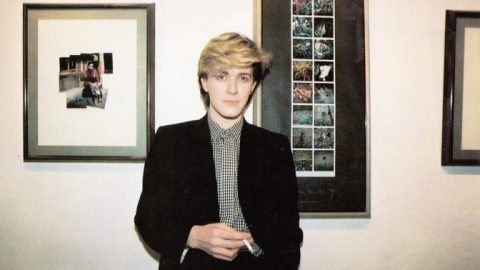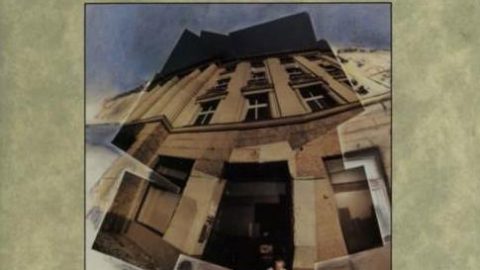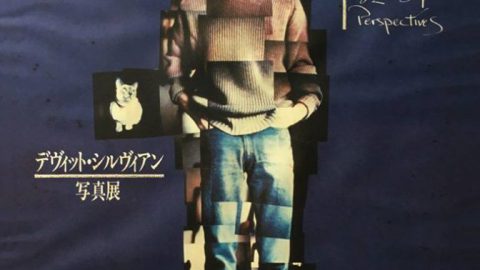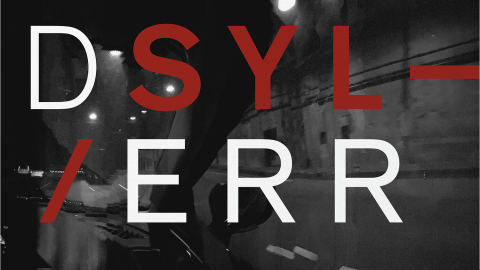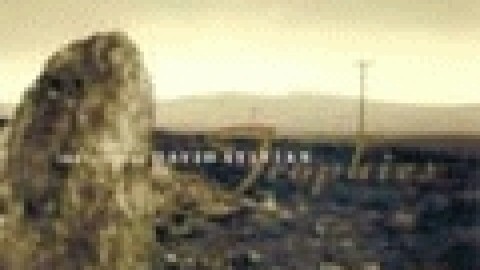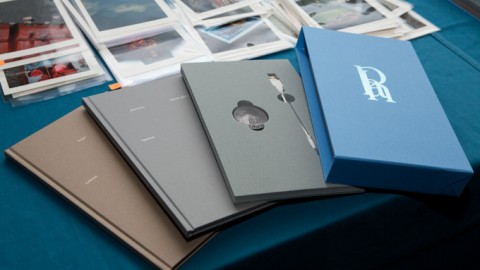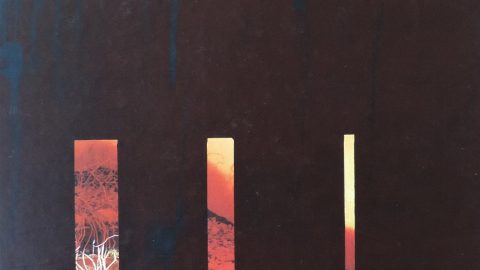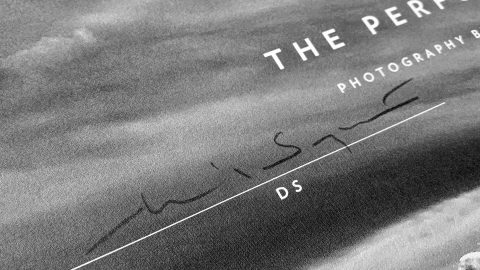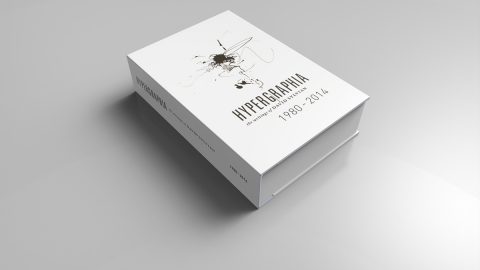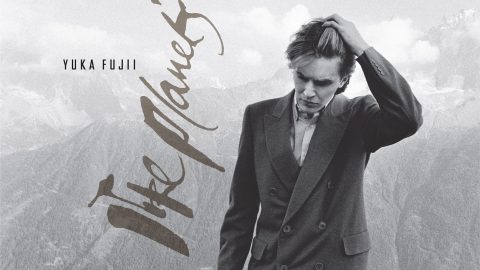Super rare Japanese release of the Perspectives book, covering his Polaroids artwork from 1982 to 1984. This book (only 500 printed!), as well as the regular UK release, contain colour prints of his polaroid collages, featuring many famous persons as subject of those collages like Steve Jansen, Holger Czukay, Yuka Fujii and Angus McBean.Compared to the UK edition, there are some additional polaroid compilations printed and a series of letters written by Sylvian to Sakamoto concerning the publication of the book, among other things (see one of the pictures with a sketch by Sylvian of a very Cocteauesque-looking Orpheus).
The physical structure of the book is like an old Buddhist prayer book, i.e. that it doesn’t have a spine, it’s like one great, long scroll has been folded up
between two hard covers.
Japanese Perspectives introduction by David Sylvian
taken from the Japanese Perspectives book, transcribed by Craig Jennings
In the early part of 1982 I had, for numerous reasons, decided to take a rest from songwriting. This was to be the first break I had had since I’d started as a child at the age of 12. It was therefore not surprising that to relieve the subsequent frustration caused by this action, I turned to the only other creative outlet I’d known, and which had been my main preoccupation until my discovery of music, drawing.
The freshness brought on by this change, the naive pleasure of working and learning in a virtually unexplored area for me opened many doors.
Not least of which being my new found appreciation of the world of the arts. Drawings, paintings, sculpture, ceramics, a universe of creativity which had always been hidden from me, suddenly came to life. I had of course been aware of works by various famous artists before, but although
I was able to appreciate a lot of what I had inadvertently seen, I had never felt anything emotionally from the work in the way that I could quite naturally feel from music. Now all was changed. I first realised this whilst visiting a major exhibition by a painter living and working here in England, Frank Auerbach. The depth and intensity of emotion I experienced surpassed anything I had felt in music for a very long time, if at all. I explain this because through these and various other similar experiences my outlook on life and work changed (or maybe matured would be more appropriate) at quite a dramatic pace. In the midst of these changes came my first attempts at Polaroid montage.
It was during a visit to Hong Kong, one of the stops towards the end of a rather lengthy tour, that I first started working with Polaroid film. As was my routine throughout the tour, I would return to my hotel after the day’s performance and there I would stay for the remainder of the evening, reading and drawing sketches. On our arrival in Hong Kong we found ourselves with a day free. However, having been there fairly recently, and not having particularly enjoyed the place, I decided to spend the day at the hotel, and among other things write some letters and complete some rawings. By evening, having filled all the paper space available with notes and sketches and wishing to continue working on ideas formed while drawing, I turned to the only materials available to me at that time, the Polaroids. This is how it started and so it has continued since, constantly developing, trying to find different uses for the same materials, and when a new technique shows itself using it to the advantage of creating interesting photographs/pictures. I feel I must point out that although looking back I know there were other artists working with Polaroids in the same, or similar areas as myself (most notable of these being D. Hockney), at this time (the remaining months of ’82) I was working totally by means of self-discovery as I had no other possible guides. I gradually became more aware of the work of others towards the middle of ’83. Sometimes consciously (and I hope with humour) I place references in my work to that of others.
Prior to my work with the SX-70, my interest in photography was to be found in areas of concept and design. I never intended or expected to become personally involved in photography, indeed even now my knowledge of the practical side of the art is extremely limited. For this reason and also because of the nature of the work I do, I would not begin to think of myself as a photographer. I have far too much respect for the people who spend a large part of their lives working with the camera (Brassai, Kertesz, Riboud, Benton, McBean and Ray) and who give true meaning to the word.
I do not see the work in this book as an end in itself. Essentially I believe that there are only a handful of pictures I have produced which transcend the techniques used and show a possibility of standing up to time. The remainder are either very personal pictures and ‘or show and explore germs of ideas which may be followed up in the future by work in other mediums.
My experimenting with Polaroids is about at an end. Although I’m still working with the techniques I’ve developed in an attempt to produce pictures of a more lasting quality. I’ll soon be turning my interests to new areas, using, along with new ideas, the more valuable I have learnt from working with Polaroids.
David Sylvian
London Jan. 85


